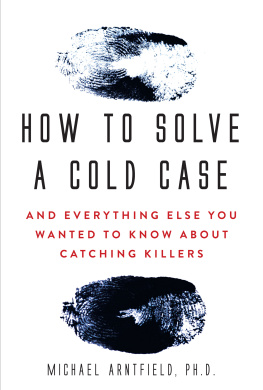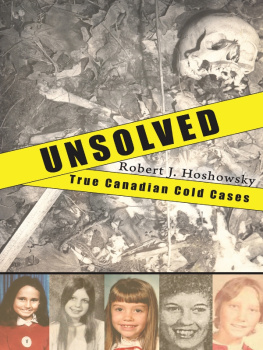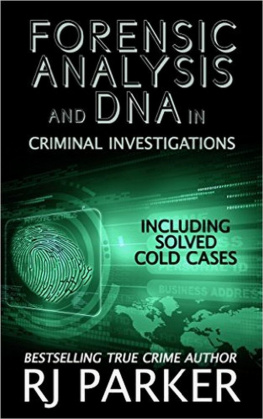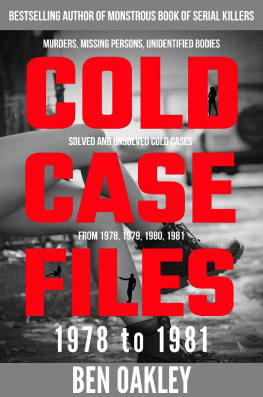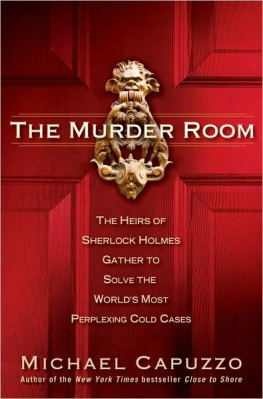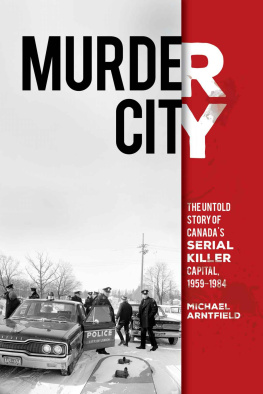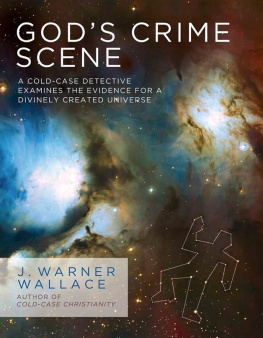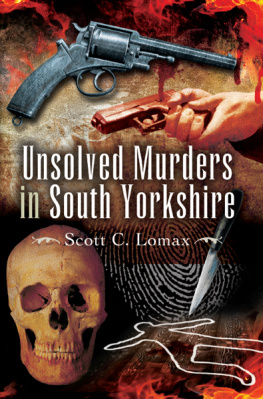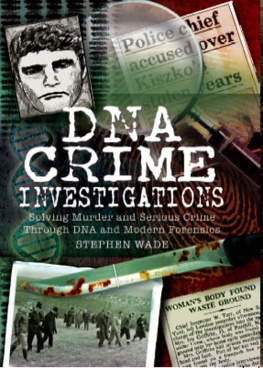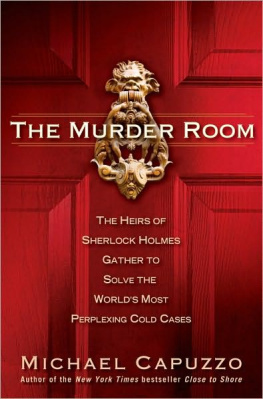Contents
Guide
Dedicated to the memories of Eric W. Witzig and Omar Hassan
I am the wisest man alive, for I know one thing, and that is that I know nothing.
Plato, The Republic
N o one saw it coming. Rather, no one saw him coming. No one even knew he existed. And then, all of sudden, everyone did. Sort of. His name was just about everywhere.
He went from being a hardscrabble nobody, already doing life at California State Prison for the murders of three women everyone had long since forgotten, to being mainstream newsa household name for all the wrong reasons. Samuel Little came out of nowhere and caught everyone flat-footed. The overtime bill on damage control for the police publicity machine across the United States went through the roof. The PR disasters and police shootings of 2020 that led to the Defund the Police mantra were one thing (a thing I will discuss again later), but this was something else entirely. A failure that was more insidious. A multi-generational failure that had no accompanying body cam or smartphone footage primed to go viral, but that was, at least for those paying attention, just as damning. Sam Little was a microcosm of the murder problem in North America, one which most people dont even know exists.
The FBIs own official mantra, more of a recurring credo, is still that only one in every one hundred murders, solved or notabout 1 percent on averageis the work of a serial killer. Ask the chief or commissioner of just about any major metropolitan police department in America if they have a serial killer on the loose or are looking to connect any unsolved cold cases to a serial killer who has since slipped off their radar, and you have few, if any, whod agree to such a notion. They would cite that same credo and dubious statisticthat serial killers are a statistical rarity and otherworldly criminal anomalyto quell anxiety and tamp down public panic. Serial killers, theyd say, are a known quantum, and they simply dont exist in your town. Maybe in other towns, but not in your town. But then Sam Little came along. Or rather, not so much came along, but was asked the right questions by the right cop and finally spilled the beans. Its amazing how many cases still get solved that way.
In May of 2018, Little, a former gravedigger and ambulance attendant who had been confined to a wheelchair and suffering from advanced diabetes while professing his innocence since being convicted for three murders in the fall of 2012, finally realized the jig was up. He eventually copped to not only the three sex slayings for which hed been properly tried and convicted in California, but also, in speaking to a firebrand Texas Ranger named James Holland, with whom hed go on to have a key confessional relationship, to the 1994 murder of a woman named Denise Brothers in Odessa, Texas. That was the first time Littles involvement in a cold case came to Hollands attention, and his line of questioning soon got the ball rolling on dozens of other unsolved murders and unidentified Jane Doe cases in cities and towns across the United States. Soon, it seemed, Little couldnt stop talking.
Little wasnt the first serial killer to revel in the process of jailhouse confession writ large. Not by a long shot. Fellow serial murdering contemptible and ensuing media darling Ted Bundy, as well as Deadly Drifter Henry Lee Lucassomeone youd think was straight out of central casting for 1970s hillbilly horror moviesboth confessed to (or at least hinted at) other victims all over the map. In the case of Lucas, his confessions included literally thousands of victims of various sex murders he claimed to have committed as part of a psychopathic attention-seeking ruse that has, in large part, fuelled the urban legend that serial killers want to be caught and are primarily driven by publicity. Not true. False confessions by Lucas-type killers, while rare, are driven for the most part by the same pathology that leads them, when not in jail, to bombard their co-workers, friends, neighbours, and lovers with overstated achievements, fake credentials, and manufactured successes for much of their lives. These are the hallmarks of a psychopath, and psychopaths are, at least anecdotally, thought to be responsible for most serial murders and, by extension, are behind most crimes that become cold cases. More on that later, too.
Psychopaths like Bundy and Lucas and many others have confessed to crimes they didnt commit in order to serve their own egos and rational self-interest: to make themselves invaluable to law enforcement or to delay their executions for the killings for which theyd actually been arrested and convicted. Such manipulators string cops along with specious stories just detailed enough to be believable, but also just vague enough to merit further interviews, so they can spend their days in the comparatively comfy confines of an interview room, enjoying taxpayer-funded McDonalds meals and Marlboros, rather than in a prison cell. In Bundys case, his subterfuge and delay tactics became increasingly obvious, and he rode the lightning as scheduled in the Florida electric chair on Friday, January 24, 1989a day coined Fry Day by the celebratory tailgaters gathered outside the prison walls. Lucas, on the other hand, eventually had his death sentence commuted to life in prison. He later died of a heart attack, long after his thousands of confessions, taken at face value by cops eager to clear cold case murders nationwide, turned out to be completely false. Nonetheless, Lucas was no small-timer. He might not have killed the thousands he claimed, but he was likely good for at least a dozen murders, most of them sex slayings. His first victim was his own mother.
Samuel Little turned out to be different. Since the heyday of phony confessions in the 1980s, the process for vetting prisoner confessions and identifying false ones has improved, and digital record management systems have emerged among law enforcement agencies. So in 2018, Littles stories, even with spotty details, were more easily corroborated by investigators. Given the history of convicted serial killers trying to inflate their body counts, some skeptics naturally first thought Little might also be toying with police. But before long, his stories of sex crimes spanning the entire nation over three decades took on the unmistakable ring of truth. Soon Little had accounted for more than ninety victims across at least fourteen states between 1970 and 2005, victims consigned to the dustbins of history in a nation consistently clocking upwards of sixteen thousand criminal homicides a yearevery year.
We can now accurately estimate that serial killers like Little are likely responsible for about one in twenty of these cases, not one in one hundred as stated in earlier FBI publicity materials. One in twenty may not sound like a lot, but the damage is cumulative, both to the communities these killers ravage and to the criminal justice system as a whole. It also means serial killers are responsible for far more murders, including unsolved murders, than previously estimated. The net result is that they create an overall drag on the annual solved murder rate while at the same time generating a disproportionate number of cold cases; they distract, misdirect, and introduce chaos into an already chaotic and disorganized criminal justice system. Many jurisdictions are still rooted in moving around paper and fail to report annual murders to the federal government, meaning annual murder statistics are more estimates than concrete, verifiable numbersand its getting worse.
By virtue of their abnormality, unpredictability, and disruptive nature, serial killers also leave an unmistakable mark within the larger haystack of annual murders that distinguishes their crimes from thousands of other killings, most of which, fortunately, do get solved. In other words, serial killers are inextricably entwined with unsolved murders that ossify into cold cases. And they forever will be.

